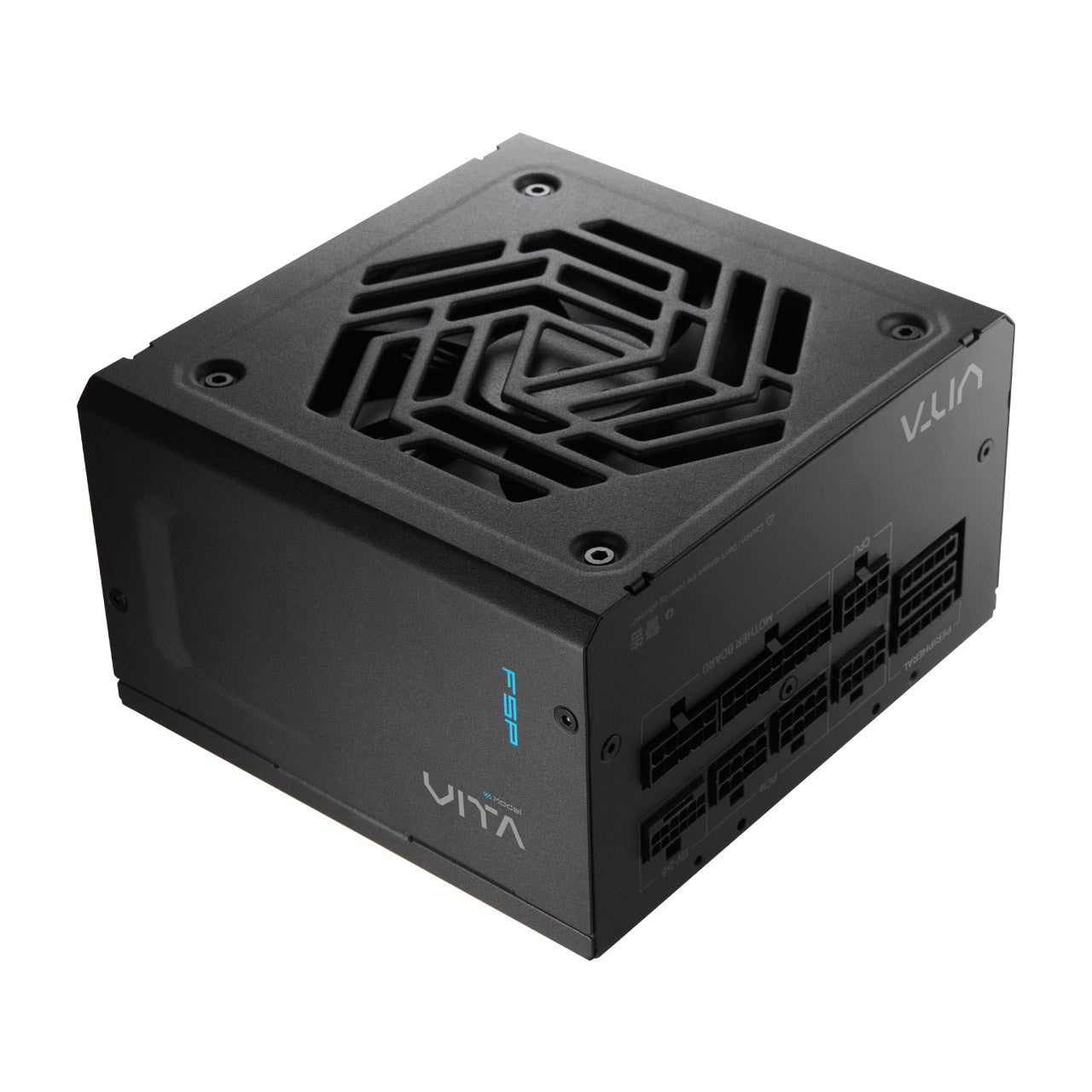
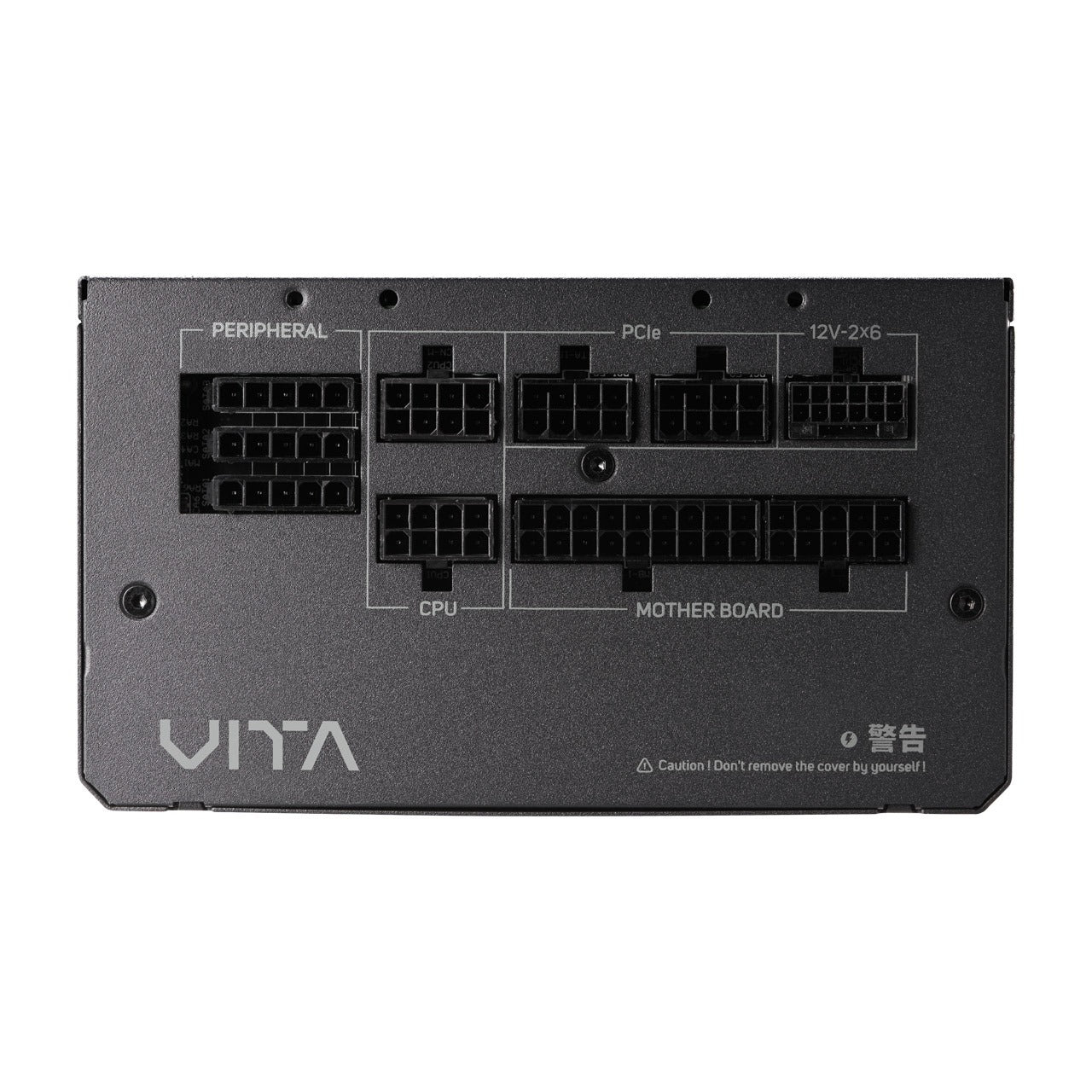
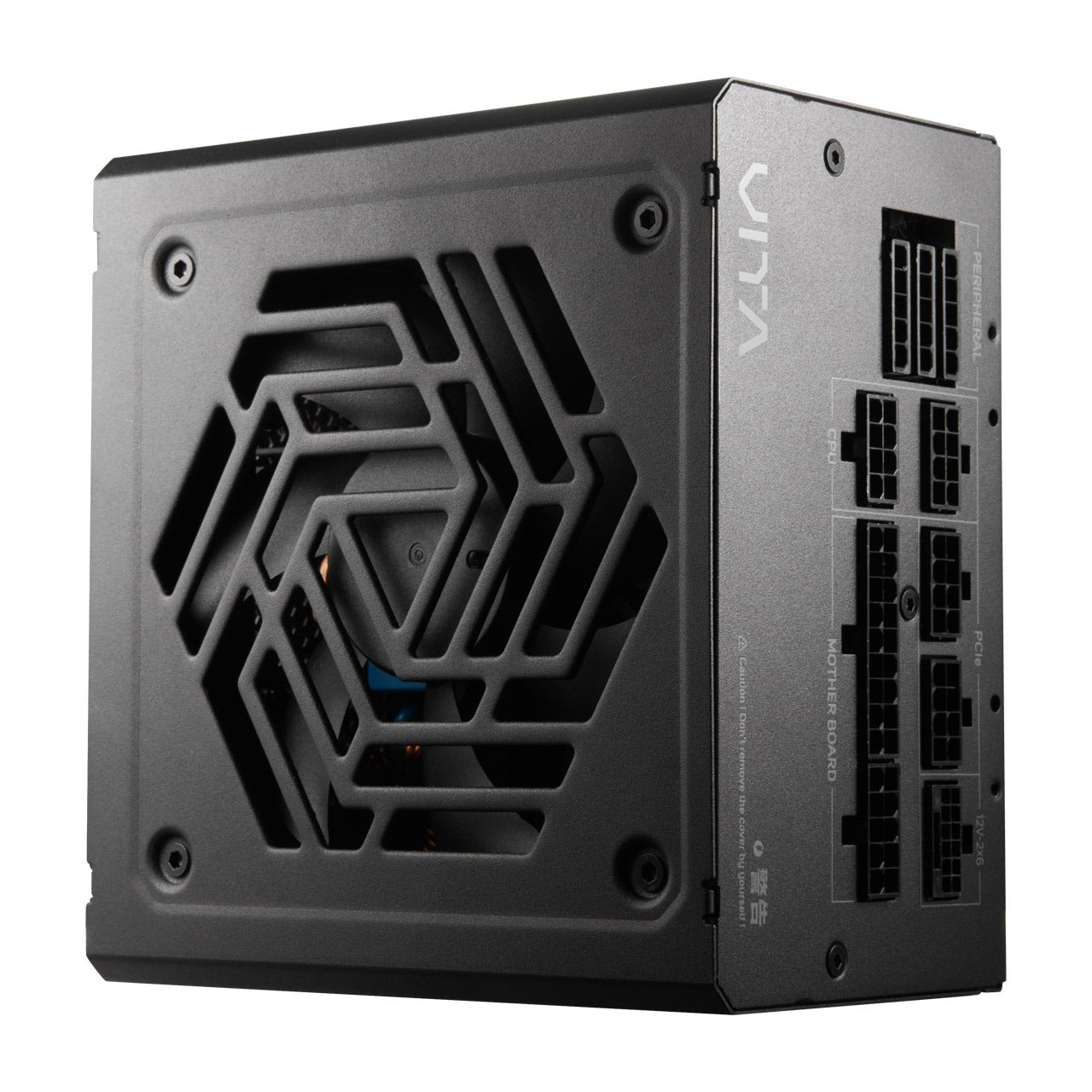

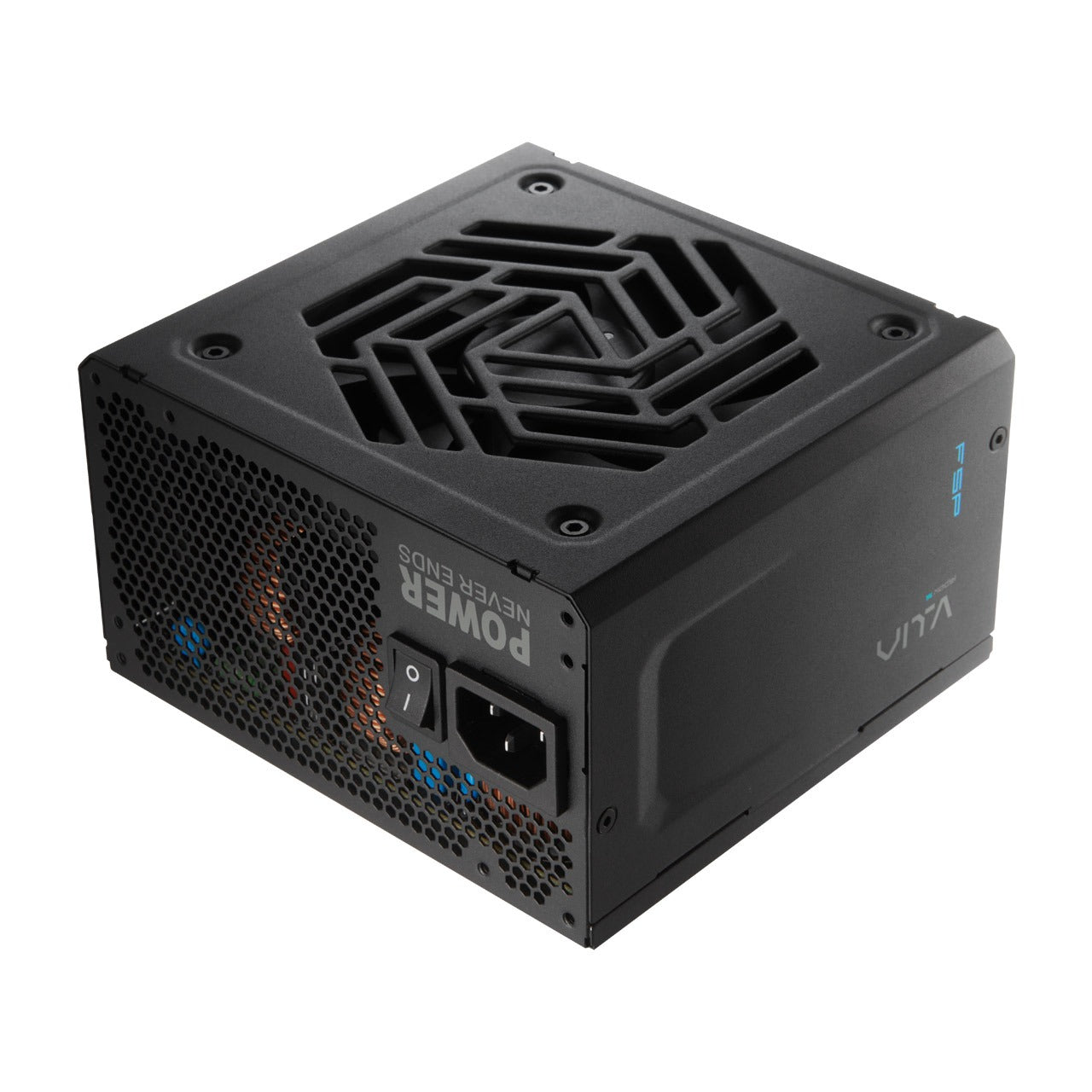
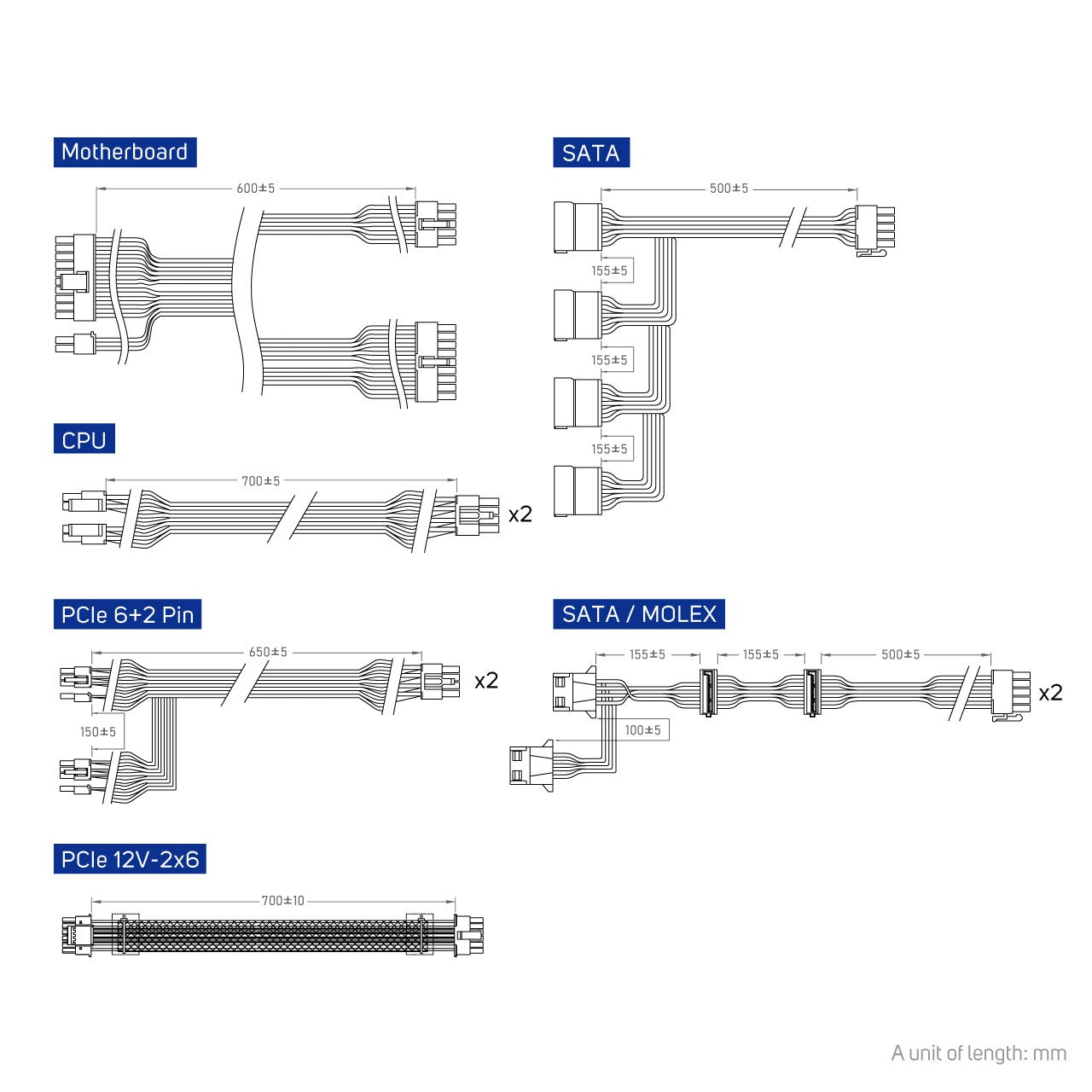
FSP Vita GM 1000W PCIe 5.1 12V-2x6 ATX 3.1 Fully Modular 80+ Gold PSU
- Complies with ATX 12V V3.1 & EPS 12V V2.92
- Efficiency ≧ 90% at typical load
- 80 PLUS ® gold certified
- 105°C Japanese bulk capacitor
- 120mm hydraulic bearing ( HYB ) fan
- Fully modular cabling design
- Complete protections: OVP, OCP, OPP, OTP, SCP, UVP, SIP, NLO
Choose options









Complies with Intel ® Power Design Guide ATX 3.1
Built for the demanding power requirements of tomorrow, these PSUs offer maximum total power excursion support as per ATX 3.1 and PCIe Gen 5.1 specifications, ensuring peak performance with future hardware upgrades.

High Efficiency in Gold-certified
Certified by world-class organizations 80 PLUS® gold certifications and reach platinum efficiency at typical load for lower power loss, less heat, and quieter operation.
LLC Resonant-converter Topology with Synchronous Rectifier
Reducing switching losses, boosting efficiency, and keeping the output voltage regulated under load conditions.
+5V & 3.3V DC to DC Circuit Design
Increase the efficiency and stabilize the output voltage to ensure system stability.

105°C Japanese Bulk Capacitor
Equip your PC with the best-in-class capacitors to offer maximize reliability, performance, and lasting power.
120 mm hydraulic bearing (HYB) fan
Quality bearing keeps fan noise to a minimum while providing maximum cooling performance.

Powerhouse Single +12V Rail
This high-amperage +12V rail delivers high load capabilities, it’s ideal for intensive workloads of high-performance CPUs and graphics cards.

The Force Comes with You
Individual CPU 4+4 pin cables provide CPU direct output power to ensure stable operation even under the most demanding workloads.


The Force Comes with You
Dual PCIe 6+2Pin cables and a versatile 12V-2x6 cable offer flexible configuration for even the most power-hungry NVIDIA or AMD graphics cards.
Fully Modular Cabling Design
To make power supply installation easy and allows users to use only the needed cables, improving airflow and reducing system clutter.

Compact PSU Size:140 x 150 x 86mm
140mm in length which is relatively shorter than industry standard, it’s ideal for compact PC or space-constraint environment without compromising on performance.
OVP
Over Voltage Protection
OCP
Over Current Protection
OPP
Over Power Protection
OTP
Over Temperature Protection
SCP
Short Circuit Protection
UVP
Under Voltage Protection
SIP
Surge and Inrush Protection
NLO
No-load Operation
Fortress-level Protection
Our comprehensive circuit shields your valuable components from harm.



MB 20+4 PIN
1 cable
1 connector
600 mm

CPU 4+4 PIN
2 cable
2 connector
700 mm

PCIe 6+2 PIN
2 cable
4 connector
800 mm


PCIe 12V-2x6
1 cable
1 connector
700 mm
*PCIe 12V-2x6 cable with sleeving

SATA
1 cable
4 connector
965 mm




SATA / MOLEX
2 cable
4 MOLEX
4 SATA
910 mm


Performance


AC/DC
| AC Input | 100-240V~ 12-6A 50-60Hz (Not for China) | 200-240V~ 6A 50-60Hz (Only for China) | / | / | / |
|---|---|---|---|---|---|
| DC Output | +3.3V | +5V | +12V | -12V | +5Vsb |
| Max Output Current | 20A | 20A | 83.33A | 0.3A | 3A |
| Max Combined Power | 100W | 100W | 1000W | 3.6W | 15W |
| Total Power | 1000W | / | / | / | / |
Specifications
| Model | VITA-1000GM |
|---|---|
| Rated Output Power | 1000W |
| Form Factor | ATX12V V3.1 |
| 80 PLUS Certification | Gold |
| Cybenetics Certification | Gold |
| Cybeneitcs Lambda | A- |
| Input Voltage | 100-240V |
| Input Current | 12-6A |
| Input Frequency | 50-60Hz |
| PFC | Active ≧ 0.9 |
| Efficiency(at typical load) | ≥90% at typical load |
| Fan Type | HYB fan, 120mm |
| Dimensions(L x W x H) | 140×150×86 mm |
| Operation Temp. | 40°C |
| Protection | OVP, OCP, OPP, OTP, SCP, UVP, SIP, NLO |
| Warranty | 10 Years |

